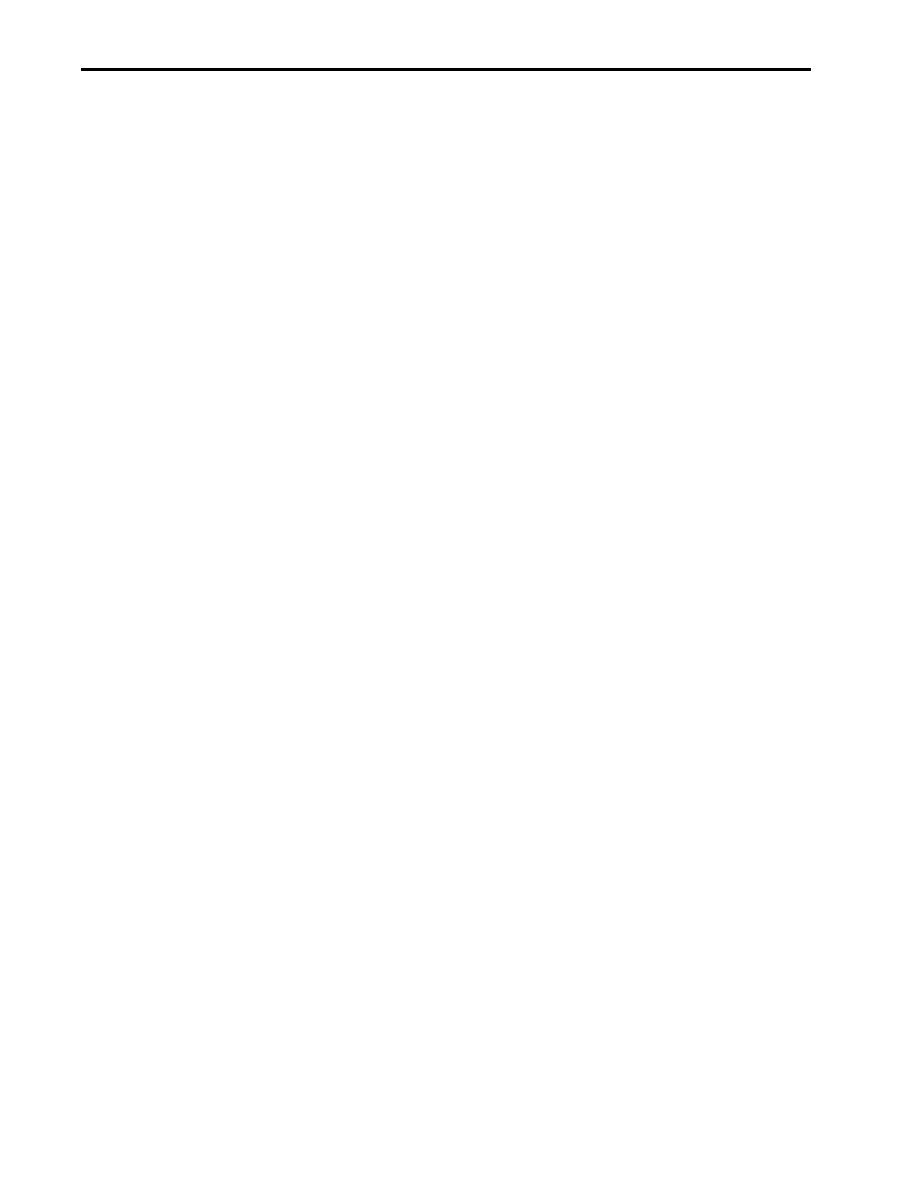
| Tweet |

Custom Search
|
|

|
||
 TM 55-1925-273-10-1
0017 00
An oil passage in the turbocharger oil filter (figure 4, item 5) head, parallel to the turbocharger oil filter output line, is
connected to a passage in the turbocharger oil manifold. An oil pressure line is connected between the manifold passage and
the low oil pressure device in the governor.
Oil enters the hollow bore camshafts from the camshaft drive stubshafts. Radial holes in the camshaft conduct oil to each
camshaft bearing. An oil line from one camshaft bearing at each cylinder supplies oil to the rocker arm shaft, the rocker arm
cam follower assemblies, the hydraulic lash adjuster, and the injector rocker arm button. Runoff oil returns to the oil pan
through passages between the top deck and the oil pan. Passages in the turbocharger conduct oil to the turbocharger
bearings, idler gear, planet gear assembly, and auxiliary drive bore.
PISTON COOLING OIL SYSTEM
Internal parts of the piston are lubricated and cooled by the piston cooling oil pump of the main lube oil and piston cooling
oil pump (figure 4, item 1). The piston cooling oil pump receives oil from a common suction with the main lube oil pump
and routes oil to the two piston cooling oil manifolds extending the length of the engine, one on each side. A piston cooling
oil pipe (figure 4, item 6) at each cylinder directs a flow of oil through the carrier to cool the underside of the piston crown
and the ring belt. Some of this oil enters the oil grooves in the piston pin bearing and the excess oil drains out through holes
in the carrier crown to the sump.
SCAVENGING OIL SYSTEM
The scavenging oil system pump (figure 4, item 2) takes oil through the scavenging oil strainer from the oil pan sump or
reservoir. The pump forces the oil through the oil filters and oil cooler that are located forward of engine. Oil then returns
to the strainer housing to supply the main lube oil pump and piston cooling oil pump with cooled and filtered oil. Excess oil
spills over a dam in the strainer housing and returns to the oil pan.
TURBOCHARGER LUBRICATION (SOAKBACK) SYSTEM
Prior to the engine startup, a soakback pump lubricates the turbocharger. Oil is drawn from the engine oil sump and passes
through a soakback pump filter (figure 4, item 7). Oil is then supplied to the turbocharger through external piping, which is
connected to the engine-mounted filter housing. In operation, the turbocharger is lubricated by the main oil pressure pump
of the main lube oil and piston cooling oil pump (figure 4, item 1) through internal passages within the engine. Before
entering the turbocharger, the oil passes through an engine mounted turbocharger filter (figure 4, item 5).
To ensure lubrication of the turbocharger bearings prior to the engine start and the removal of residual heat from the turbo-
charger after engine shutdown, a separate lube oil pressure source is provided. This pressure is controlled automatically
though the engine START and STOP controls. An electrically driven pump drawing lube oil from the oil pan pumps the oil
through a soak back oil filter and the head of the turbocharger oil filter directly into the turbocharger bearing area. The
motor driven pump and filter are located on the starboard side of the engine.
A pressure relief valve set at 379 PSI (26 bar) is located in the head of the turbocharger oil filter (figure 4, item 5). When the
engine starts, and while the motor driven pump is still running, main lube oil pressure from the engine-driven pump becomes
greater than the motor driven pump pressure. Since there is no outlet for the lower pressure oil, the relief valve will open
when the pressure builds up to 379 PSI (26 bar), and the oil will return to the pan through a passage in the turbocharger oil
filter head mounting flange. Also located in the turbocharger oil filter head is a bypass valve, set at 483 PSI (33 bar). This
valve will open to permit motor driven pump pressure to bypass a plugged filter element so that lubrication can be supplied
to the turbocharger to prevent turbo damage.
TURBOCHARGER OIL FILTER
The turbocharger oil filter (figure 4, item 5) provides additional protection for the high-speed bearings and other lubricated
areas of the turbocharger by filtering the oil just before it is admitted to the turbocharger. Oil enters the filter through a cast
manifold and, after passing through the filter, returns to the upper idler gear stubshaft and into the turbocharger. The filter
element is pleated paper construction, and is disposable. The filter is mounted on the camshaft drive housing at the right
bank of the engine.
0017 00-6
|
||
 |
||